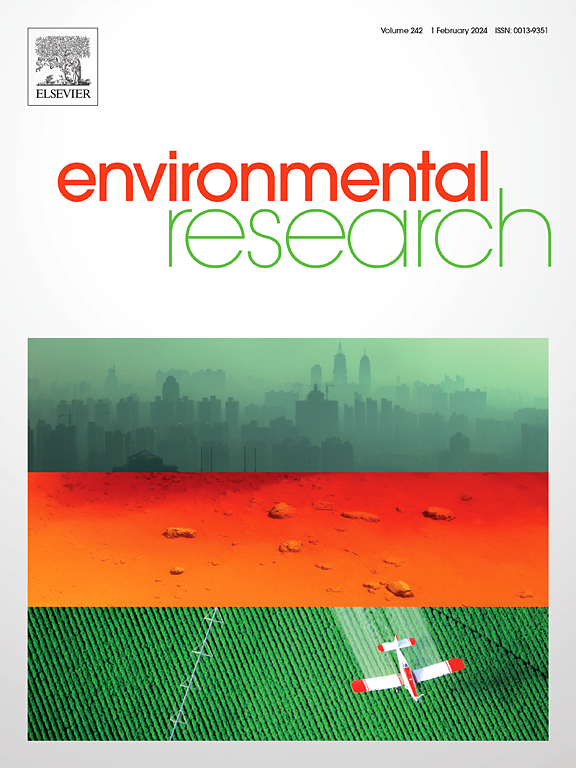生物活性炭过滤器中动态微生物群落组装和分子生态网络响应:藻类有机物暴露和空床接触时间的影响
IF 7.7
2区 环境科学与生态学
Q1 ENVIRONMENTAL SCIENCES
引用次数: 0
摘要
生物活性炭(BAC)在饮用水深度处理中起着至关重要的作用。最近的研究从去污性能评价转向工艺优化和微生物群落定制。微生物群落对藻类爆发或死亡引起的季节性水质变化的响应,过滤介质和空床接触时间(EBCT)的运行条件,以及组装过程和分子生态网络的动力学尚不清楚。本文研究了不同理化性质的颗粒活性炭(GAC)填充4个BAC柱暴露于藻类有机物(AOM)和EBCT的变化后的去污性能。系统评价了微生物多样性、组装机制和分子生态网络动态。结果表明,煤基BAC在AOM作用下表现出更好的去污性能,CODMn(47.23%)、UV254(55.82%)和NH4+-N(65.01%)的平均去除率高于木基BAC,微生物多样性和丰富度也高于木基BAC。AOM暴露增加了微生物多样性,而缩短的EBCT则减少了微生物多样性。在AOM暴露和缩短10 min的EBCT下,群落聚集的确定性过程均增强,所占比例分别高达82%和75%。AOM暴露增加了网络规模和复杂性,而缩短10min的EBCT则呈现相反的趋势。结构方程模型发现,进水水质(路径系数= 1.00)是微生物多样性的主要驱动因素,其次是GAC特性(0.30)和EBCT(- 0.35)。这些发现为微生物群落定制和BAC工艺优化控制藻类来源的有机污染提供了见解。本文章由计算机程序翻译,如有差异,请以英文原文为准。
Dynamic microbial community assembly and molecular ecological network responses in biological activated carbon filters: effects of algal organic matter exposure and empty bed contact time
Biological activated carbon (BAC) filtration plays a crucial role in advanced drinking water treatment. Recent researches have shifted from decontamination performance evaluation to process optimization and customization of microbial communities. The responses of microbial communities to seasonal water quality variations caused by algal outbreaks or deaths, and operational conditions of filtration medium and empty bed contact time (EBCT), along with dynamics of assembly processes and molecular ecological networks remain insufficiently understood. Herein, the decontamination performance of four BAC columns packed with varied physicochemical properties of granular activated carbon (GAC), exposed to algal organic matter (AOM) and changes of EBCT was investigated. Microbial diversity, assembly mechanisms, and dynamics of molecular ecological networks were systematically evaluated. Results showed that coal-based BAC exhibited superior decontamination performance under AOM exposure, with average removals of CODMn (47.23 %), UV254 (55.82 %), and NH4+-N (65.01 %), along with higher microbial diversity and richness than that of wood-based BAC. AOM exposure increased microbial diversity, while shortened EBCT reduced it. Deterministic processes in community assembly intensified under both AOM exposure and a shortened EBCT of 10 min, the proportion were up to 82 % and 75 %, respectively. AOM exposure increased network scale and complexity, whereas the opposite trend was observed with a shortened EBCT of 10min. Structural equation modeling identified that influent water quality (path coefficient = 1.00) was the dominant driver of microbial diversity, followed by GAC properties (0.30) and EBCT (−0.35). These findings provide insights for microbial community customization and BAC process optimization to control algal-derived organic contamination.
求助全文
通过发布文献求助,成功后即可免费获取论文全文。
去求助
来源期刊

Environmental Research
环境科学-公共卫生、环境卫生与职业卫生
CiteScore
12.60
自引率
8.40%
发文量
2480
审稿时长
4.7 months
期刊介绍:
The Environmental Research journal presents a broad range of interdisciplinary research, focused on addressing worldwide environmental concerns and featuring innovative findings. Our publication strives to explore relevant anthropogenic issues across various environmental sectors, showcasing practical applications in real-life settings.
 求助内容:
求助内容: 应助结果提醒方式:
应助结果提醒方式:


